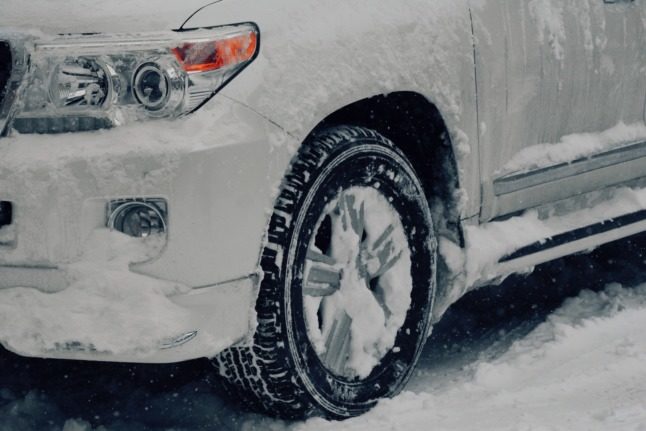Why are winter tyres needed?
Suitable tyres are required during the Norwegian winters due to icy conditions reducing road surface grip.
In some more remote parts of the country with lots of snowfall and not much road maintenance coverage, you can opt to use studded tyres for more traction.
If you are new to Norway, you might not be aware that most motorists own two sets of tyres, one for the winter and one for the summer.
Many people will change the tyres themselves, but if you aren’t particularly handy, you can have a mechanic change them. Many garages have slots to change the winter tyres at this time of year.
QUIZ: Would you pass the Norwegian driving theory test?
When is the winter tyre season?
In the northernmost parts of the country, the winter tyre season begins earlier due to the snow arriving and settling quicker than it does in the south. The season in the north begins on October 16th before commencing on November 1st in the rest of the country.
When the season ends is rather more confusing: the first Sunday after the 2nd day of Easter. We know that’s not very helpful or easy to understand, as the rule is more of a brain teaser or riddle than a set date.
To break it down, winter tyres will need changing in southern Norway from April 7th 2024.
There are no rules stopping you using winter tyres past this point, but studded ones will be prohibited.
How much do they cost?
One recent trend to be aware of is the rising cost of winter treads. A set of four winter tyres could cost between 15,000 to 20,000 kroner for a large vehicle, as prices have rose by between 20-50 percent.
Typically, cheaper winter tyres can be acquired for 8,000 kroner for a full set. A decent set of winter tyres goes for between 10,000 – 12,000 kroner, and the highest quality tyres cost between 13,000 – 15,000 kroner.
The reason for the steep price rises is due to the large number of tyres typically being sourced from Russia and the effects of the war in Ukraine.
What are the requirements?
In the winter, tyres must have a minimum pattern millimetre depth of 3mm. Cars can also be fitted with studded tyres that can only be used during the winter season.
There are different requirements for heavy vehicles over 3,500 kg. You can read about the rules for heavier vehicles here.
In summer, the minimum tread depth is 1.6 milometres. The video below shows a quick overview of the rules from Utrykningspolitiet, or the Central Mobile Police Service.
What happens if I am caught with the wrong tyres?
It might seem like a tedious chore, but you’ll kick yourself if you don’t take the time to check.
Not only is it potentially dangerous because of lack of grip on the road, but it can also be expensive.
If you are stopped with tyres that don’t appear suitable, you can be charged up to 750 kroner per tyre if they don’t meet the minimum requirements. This, unless you own a Reliant Robin, means having the wrong tyres or rubber that isn’t up to scratch could cost you up to 3,000 kroner.
It is worth checking the tread on your winter tyres, as one in four don’t meet the minimum tread requirements, according to new figures from Vianor Norway.



 Please whitelist us to continue reading.
Please whitelist us to continue reading.
Member comments